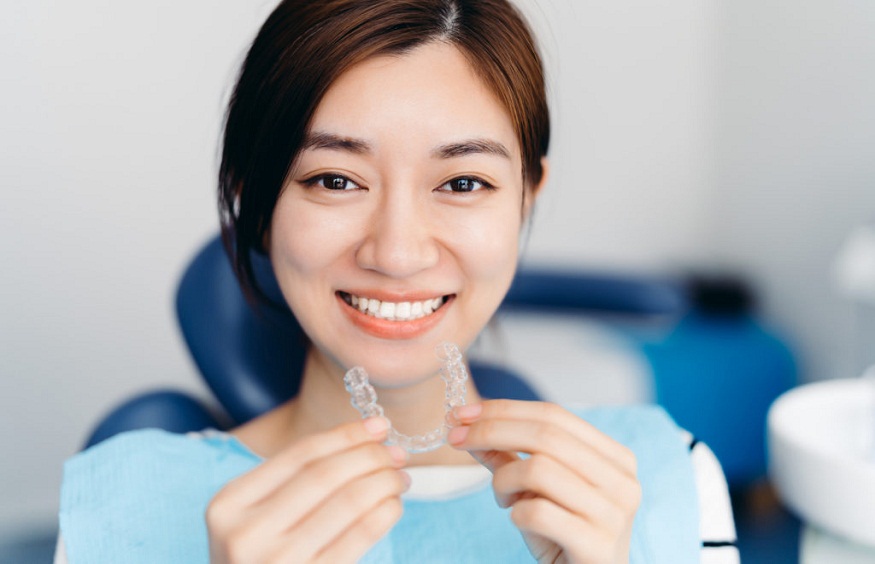The advent of clear aligners has transformed the orthodontic landscape, offering a revolutionary alternative to traditional metal braces. These removable, transparent trays designed by the orthodontist in Irving, TX have captivated patients and dental professionals alike with their promise of discreet, comfortable, and efficient teeth straightening. Since their introduction, clear aligners have experienced unprecedented growth, becoming a sought-after solution for individuals seeking to enhance their smile aesthetics without sacrificing lifestyle or self-confidence.
With advanced digital technologies and innovative materials driving their development, clear aligners continue to push the boundaries of orthodontic care, providing a compelling option for those seeking a more subtle, patient-friendly approach to achieving a radiant, healthy smile.
What are clear aligners?
Clear aligners are removable, transparent orthodontic appliances used to straighten teeth and correct malocclusions. These custom-made trays are fabricated from high-quality, medical-grade plastic materials, such as polypropylene or polyethylene, and are designed to fit snugly over an individual’s teeth. Clear aligners work by applying gentle, consistent pressure to gradually shift teeth into proper alignment, utilizing a series of sequential aligners, each worn for a specified period, typically 1-2 weeks. This incremental movement, guided by advanced digital treatment planning, enables clear aligners to effectively address various orthodontic issues, resulting in improved oral aesthetics, function, and overall dental health.
Types of clear aligners
- Invisalign: The pioneering brand, offering various products (Full, Express, Teen).
- ClearCorrect: A popular alternative with customizable treatment plans.
- SmileDirectClub: Direct-to-consumer aligners with online consultations.
- OrthoClear: A cost-effective option with advanced technology.
Clinical applications of clear aligners
- Crowding and Spacing: Correcting teeth alignment.
- Overbite and Underbite: Addressing vertical issues.
- Open Bite: Treating abnormal bite relationships.
- Complex Cases: Combination with traditional orthodontics.
What are the benefits of clear aligners?
Clear aligners are a popular choice of orthodontic treatment for millions globally since they offer the following benefits:
- Aesthetics: Virtually invisible, clear aligners enhance self-confidence.
- Comfort: Smooth, flexible material reduces irritation.
- Convenience: Removable for eating, brushing, and special occasions.
- Efficiency: Faster treatment times compared to traditional braces.
- Hygiene: Easy cleaning and maintenance.
What does the treatment process with clear aligners involve?
The treatment process with clear aligners involves several steps, from initial consultation to post-treatment retention. Here’s an overview:
Step 1: Initial Consultation
- Orthodontic evaluation: Assess teeth alignment, bite, and overall oral health.
- Treatment planning: Discuss goals, options, and estimated treatment duration.
- Digital impressions: 3D scanning or impressions for custom aligner fabrication.
Step 2: Treatment Planning
- Digital modeling: Create a 3D model of teeth and surrounding tissue.
- Aligner design: Customized aligner series planned using advanced software.
- Treatment simulation: Visualize expected outcomes.
Step 3: Aligner Fabrication
- Aligner production: Manufacture custom aligners from medical-grade plastic.
- Quality control: Verify aligner fit, accuracy, and quality.
Step 4: Aligner Wear
- Wear schedule: Wear each aligner for 1-2 weeks, 20-22 hours/day.
- Progress monitoring: Regular check-ups to track tooth movement.
- Adjustments: Refine treatment plan as needed.
Step 5: Mid-Treatment Evaluation
- Progress assessment: Evaluate tooth movement and alignment.
- Adjustments: Refine the treatment plan to ensure optimal results.
Step 6: Treatment Completion
- Final evaluation: Verify treatment goals achieved.
- Retainer wear: Begin wearing retainers to maintain results.
Step 7: Post-Treatment Retention
- Retainer wear: Continue wearing retainers as directed.
- Follow-up appointments: Monitor retention and oral health.
Future directions of clear aligners
- Advanced Materials: Improved durability and transparency.
- Digital Integration: AI-powered treatment planning and monitoring.
- 3D Printing: Customized aligner production.
- Expansion to General Dentistry: Increased accessibility.
Wrapping up
Clear aligners have revolutionized orthodontic care, offering an attractive, comfortable, and efficient solution for teeth straightening. With ongoing advancements in technology and materials, the future of clear aligners looks promising. As the popularity of clear aligners continues to grow, patients and dental professionals alike must stay informed about the benefits, limitations, and evolving landscape of this innovative treatment.

